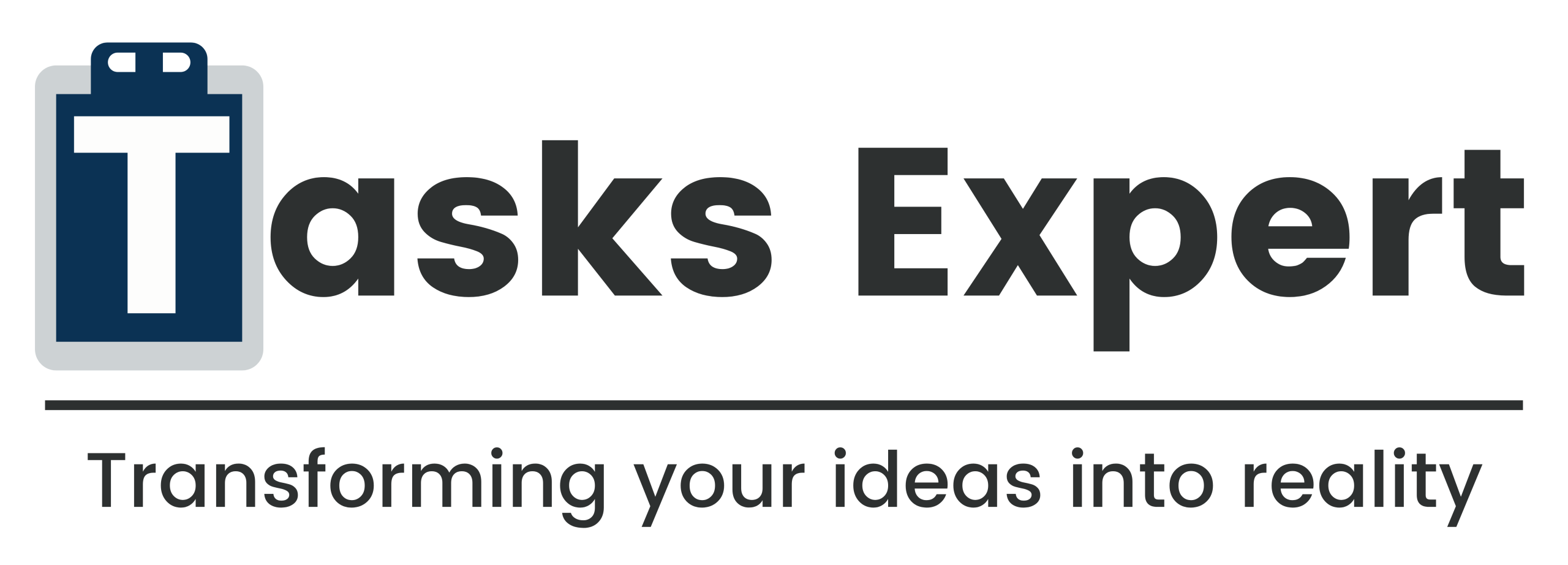Introduction
SEO cloaking types are unethical practices whereby users view something other than what search engine spiders see. While some site owners implement it to unfairly increase their ranks, it is clearly against the policies of Google cloaking. These practices, which try to fool crawlers into indexing pages in a manner other than what users view, can consist of IP-based cloaking, JavaScript-based versions, or user-agent cloaking.
While it might give a quick rankings boost, cloaking tends to do more harm in the long run. Search engines, particularly Google, now have sophisticated search engine cloaking detection mechanisms. Their algorithms and methods for detecting Googlebot cloaking can identify even minor content delivery disparities. Their methods and algorithms for Googlebot cloaking detection can detect even slight content delivery discrepancies. Cloaking-based sites are subject to strict penalties like site removal, ranking penalty, or de-indexing.
Being aware of the risks and exercising caution are essential. Understanding SEO cloaking software helps webmasters see issues early, and following recommended practices ensures you won’t break the law. The key to reclaiming your site’s reputation in search engine results is to know about these cloaking methods to reduce their impact.
What are Types of cloaking in SEO?
Types of cloaking is an SEO method by which a website displays to search engine spiders a different content than what it shows to human visitors. Such a sneaky practice aims to manipulate search results by supplying the search engine with optimized content that the users never view. It contravenes the major Google guidelines on cloaking, stressing the importance of honesty among bots and users.
To detect possible violations and prevent expensive penalties is necessary to know the forms of cloaking.
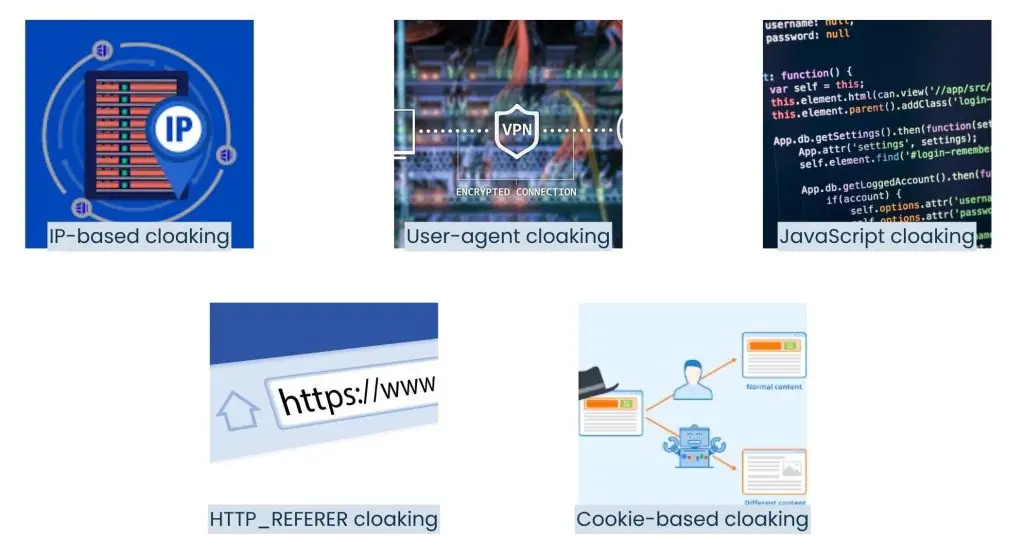
The most popular types of cloaking among webmasters and black-hat SEO specialists are as follows:
- IP-based cloaking: The IP address of the visitor presents differentiated content based on. Googlebot gets SEO-optimized content, while users do not get the same thing.
- User-agent cloaking: Using their user-agent string, it recognizes and provides Googlebot or other search engine spiders with different material.
- JavaScript cloaking: Depending on whether the browser or the bot is rendering it, hides or modifies content through the use of JavaScript.
- HTTP_REFERER cloaking: Shows alternate versions of content depending on the referrer URL.
- Cookie-based cloaking: Sends altered content based on user activity or cookie information, which bots do not have.
These strategies try to game rankings for keywords that are not actually in the user-visible version of the website. Sadly, search engines have come a long way. Unfortunately, search engines have evolved significantly. Their search engine cloaking detection systems, including robust Googlebot cloaking detection methods, can now flag even subtle types of cloaking.
If cloaking is caught, you face extreme consequences for cloaking in SEO, such as de-indexing, traffic losses, and manual actions. Using credible types of cloaking tools, such as Screaming Frog and Sitebulb, your site content remains consistently aligned across user and bot views.
To remain compliant and defend your rankings, webmasters ought to audit content regularly and employ ethical SEO techniques. Steer clear of many types of cloaking altogether as the best long-term solution to ensure visibility and credibility within search results.
Also Read: Best Practices Web Analytics Consultants
How Google Detects Types Of Cloaking
Google has made a significant investment in sophisticated technology to detect types of cloaking attempts to maintain the quality of its search results. Detection is multi-layered, with human intuition complemented by leading-edge automation. When you’re employing any fraudulent types of cloaking, it’s just a matter of when they’ll be detected.
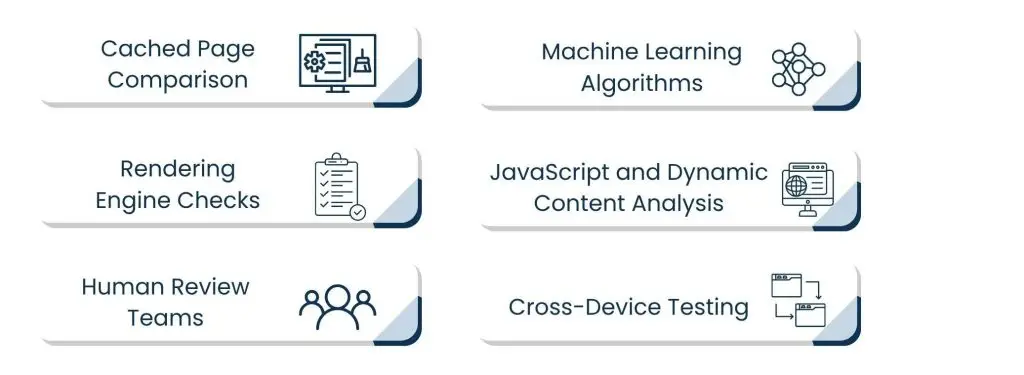
Here’s how Googlebot detects types of cloaking methods work:
- Cached Page Comparison: Google compares what its crawler sees versus what users experience. Any major differences trigger suspicion.
- Rendering Engine Checks: Google’s rendering engine loads your site like a typical user to detect hidden or swapped content.
- Human Review Teams: Trained reviewers manually inspect flagged pages, especially if automated systems detect inconsistencies.
- Machine Learning Algorithms: Google uses AI to continuously refine types of cloaking on the search engine, spotting even subtle manipulations that mimic legitimate content.
- JavaScript and Dynamic Content Analysis: Scripts used to show different content to bots are scrutinized using tools like Chrome’s headless rendering.
- Cross-Device Testing: Desktop versus Mobile discrepancies are reviewed, especially by a mobile web accessibility consultant, if accessibility claims are used to justify differences.
If any type of cloaking or suspicious behavior is seen, your site could receive an algorithmic downgrade or manual action. The website traffic, rankings, and domain credibility are highly triggered.
Pay close attention to Google’s cloaking instructions to prevent setting off Google’s detection systems. Make sure the bots and users see the same thing. Use SEO cloaking tools to verify any types of cloaking, this alignment across devices and sessions.
Key takeaway: Cloaking is not only dangerous, but it is also practically hard to get away with today’s sophisticated detection technologies. Your best line of protection against SEO penalties is transparency. Google uses sophisticated Googlebot cloaking detection methods to identify discrepancies between what bots see and what users see. Techniques include:
Comparing cached versions of your site:
- Human reviewer checks.
- Machine learning models are trained to detect cloaked content.
- Search engine cloaking detection has become so advanced that even minor infractions can trigger flags.
Penalties for Every Types of Cloaking in SEO
Applying cloaking to influence ranking may appear to be a shortcut, yet the penalties for types of cloaking in SEO are serious and sometimes permanent. When search engines such as Google catch any of the fraudulent forms of cloaking, they react with penalties that can significantly damage your site’s visibility and credibility.
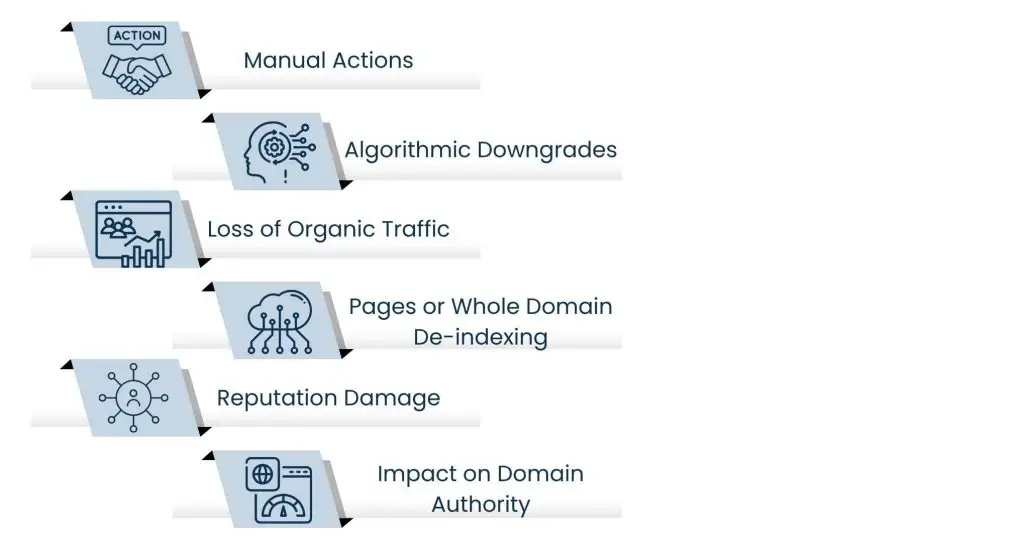
Here are the main penalties for all types of cloaking:
- Manual Actions: A website may receive manual punishment from Google, which could lead to a downgrade or elimination from search engine results due to many types of cloaking.
- Algorithmic Downgrades: Advanced search engine detects algorithms for types of cloaking that drastically lower your rankings, even if there is no human involved in their discovery.
- Loss of Organic Traffic: Penalties for types of cloaking usually result in sudden drops in search traffic, which has an immediate impact on conversions, lead generation, and income.
- Pages or Whole Domain De-indexing: In severe cases, Google can take your website off its index entirely or in part.
- Reputation Damage: The reputation of your brand may suffer if clients or customers discover that you are using certain types of cloaking strategies.
- Impact on Domain Authority: Long-term penalties reduce your site’s trust scores, making it more difficult to restore lost ranks even after the issues have been resolved.
Due to the sophistication of Googlebot detects techniques of malpractice types of cloaking, even the smallest violations lead to a penalty. It is important to detect and resolve SEO cloaking applications to pre-audit your content early before they become problems.
Bottom line: Cloaking may provide quick benefits, but it is not worth the risk. Compliance with Google’s cloaking and transparency guidelines in all online media is the only sustainable path to long-term SEO success.
How to Detect Types Of Cloaking and Fix Cloaking
Identifying and resolving cloaking is required to comply with Google’s cloaking requirements and avoid hefty SEO penalties. Many types of cloaking are not necessarily purposeful; it might occur by accident as a result of malfunctioning scripts, incorrectly configured redirects, or plugin settings.
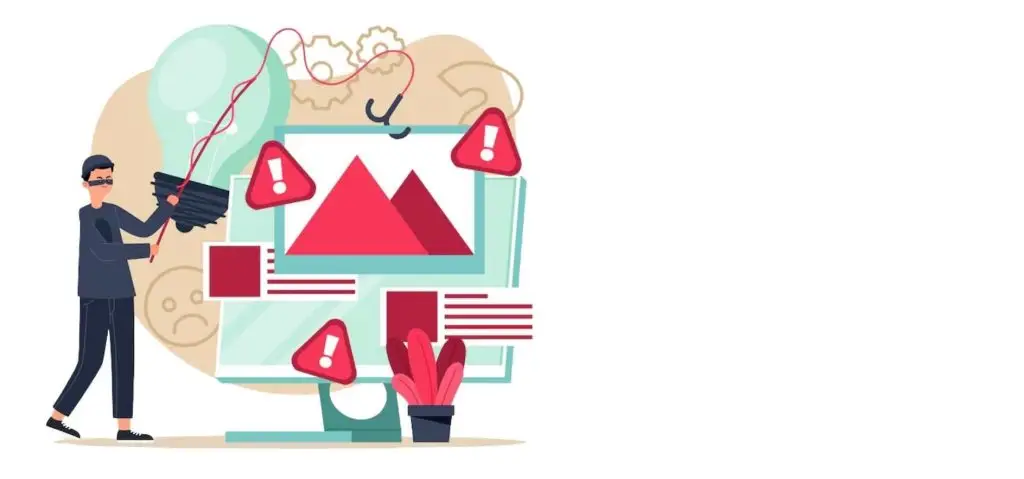
This is a detailed guide on identifying cloaking issues:
Employ tools for detecting types of cloaking for SEO: You may compare what each of them sees and point out differences by using online tools like Screaming Frog, Sitebulb, and Netpeak Spider that let you simulate both user and bot visits to your website.
The measures to fix the problem types of cloaking after detection are as follows:
- Eliminate or normalize content differences so both users and bots are presented with the same version.
- Disable scripts or plugins that alter content rendering based on user-agent, IP, or cookie information.
- Refresh redirects and canonical tags to match bot and user experience.
- Note your fixes and have evidence ready in case of a reconsideration request.
Key takeaway: Active detection employing trusted SEO cloaking tools and conforming to Googlebot types of cloaking discovery techniques will assist in protecting your rankings and maintaining your SEO strategy spotless.
Also Read: Small Business Copywriter
How to Recover from Types of Cloaking Penalty?
Restoring from the cloaking penalty needs a well-planned effort to regain Google’s trust and gain your search visibility. Manually or algorithmically, regardless of how you were penalized, the following steps show how to remedy and avoid recurrence.
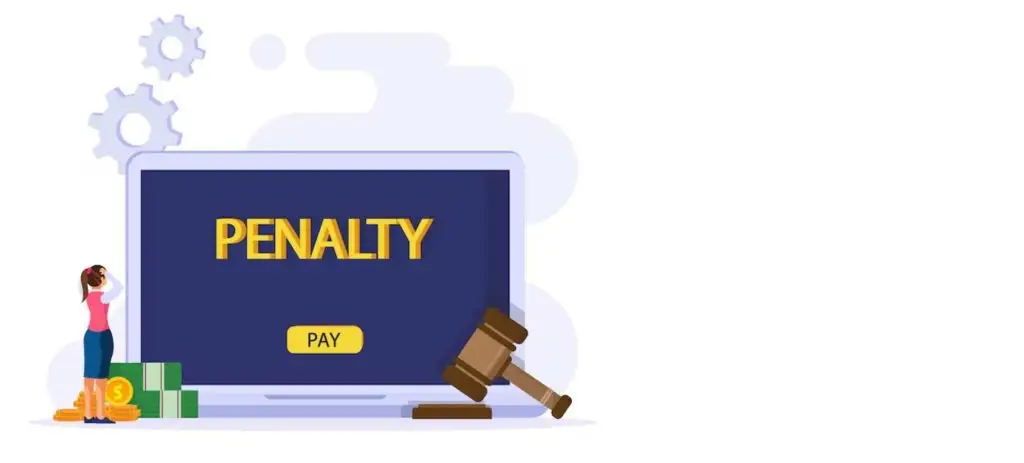
Following is how to recover from penalties for types of cloaking:
- Detect All Cloaking Methods: Employ reputed SEO cloaking tools such as Screaming Frog, Sitebulb, or Netpeak Spider to emulate both humans and experiences. Check for inconsistencies in content, redirects, or scripts.
- Classify the Offending Technique: Verify whether the cloaking was powered by JavaScript, IP, user agents, cookies, or HTTP_REFERER.
- Eliminate or Normalize Content: Ensure that users, as well as search engines, are delivered the same content on every page. Disable configurations or scripts that activate cloaking behavior.
- Completely Audit Your Site: Exceed the trouble pages. Use both automation and manual reviews to perform a complete SEO audit to identify other offenses Google would classify as cloaking-related.
- Adhere to Google Guidelines on Cloaking: Read the official Google documents on cloaking again and follow them. Avoid using gray-area tactics or shortcuts.
- Document Your Fixes: Keep a note of what was fixed and why. Include before-and-after comparisons to demonstrate compliance efforts.
- Submit a Reconsideration Request: Log into Google Search Console and submit a request outlining the initial problem, the actions taken to fix it, and your updated compliance plan if you have received a manual action.
- Monitor Reindexing Progress: After submitting your request, monitor GoogleBot activity and search results.
- Avoid Future Sanctions: Train your SEO and development teams. Conduct quarterly audits and track pages with search engine cloaking detection tools.
Key takeaway: Penalty recovery isn’t a technical fix alone. The goal is to regain Google’s trust. Your website can recover its rankings and reputation with transparency, ethical SEO, and the appropriate tools.
You may overcome the consequences of cloaking penalties and attain long-term SEO success by staying open, following best practices, and using reliable technologies.
Conclusion
Types of cloaking are among the riskiest SEO shortcuts; while it may have short-term benefits, there is a chance that it may have long-term repercussions. The long-term effects seriously harm a website’s operation and reputation, including IP-based strategies, JavaScript manipulation, or user-agent cloaking. Thankfully, thanks to advanced search engine cloaking detection and an increasing array of SEO cloaking tools, detecting and fixing these problems has never been easier.
Recovery is feasible in case of penalty but it demands openness, hard work, and a strong commitment to the Google cloaking guidelines. Knowledge of the forms of cloaking and how Googlebot cloaking detection strategies function will make you compliant and spare you from repeated offenses.
Google prefers material that is user-centric, relevant, and clear. You can avoid penalties and create the conditions for sustained organic growth.
The secret to success is proper execution. You may create a more reliable and stronger online presence by recognizing, addressing, and avoiding cloaking.
About Us
Tasks Expert offers top-tier virtual assistant services from highly skilled professionals based in India. Our VAs handle a wide range of tasks, from part time personal assistant to specialized services like remote it support services, professional bookkeeping service etc. Furthermore, it helps businesses worldwide streamline operations and boost productivity.
Ready to elevate your business? Book a Call and let Tasks Expert take care of the rest.




